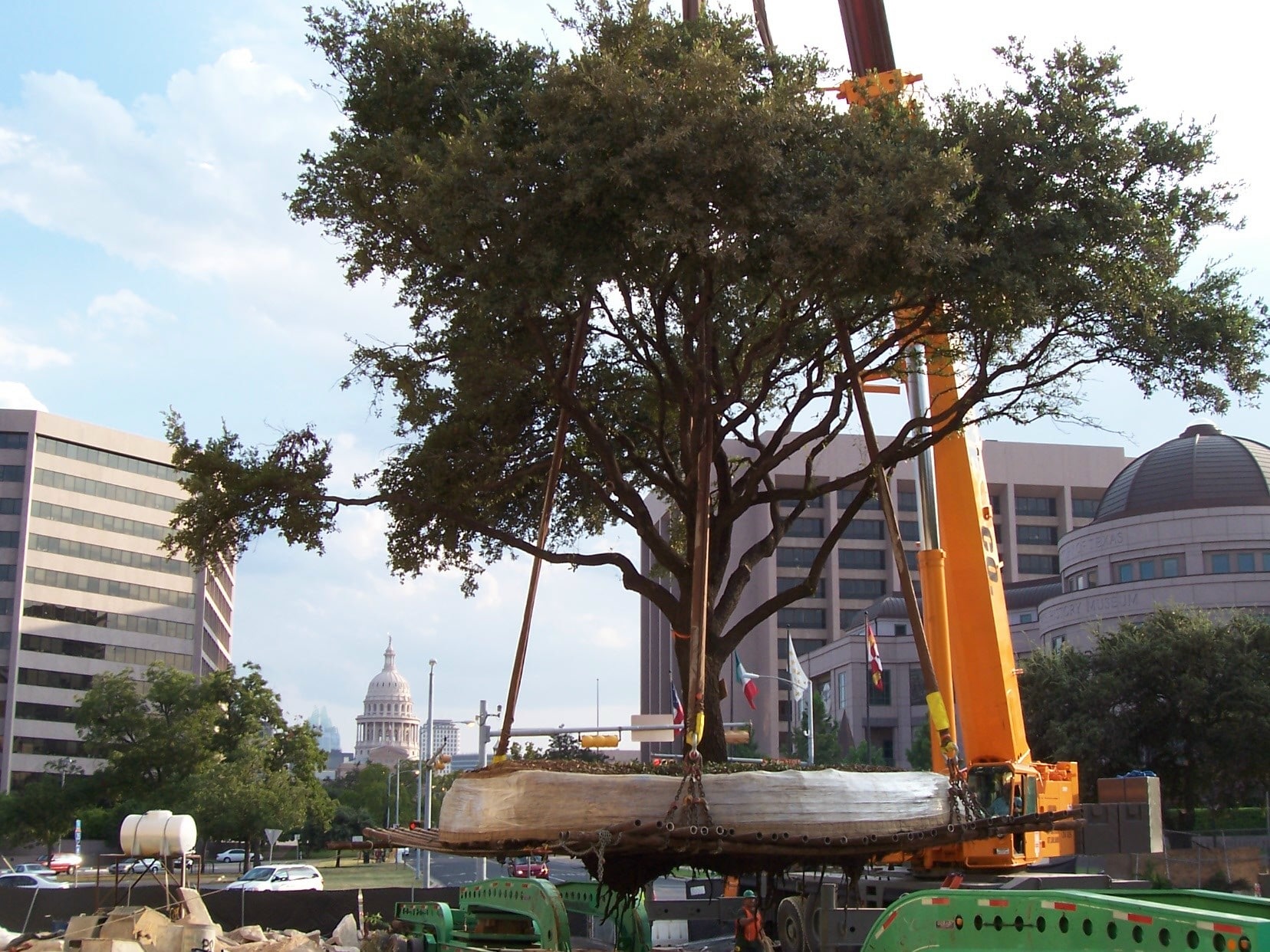In our 40+ years of experience, we have moved thousands of trees between towns or across the countryside. But the hardest kind of tree-moving is within cities. Moving a fully grown tree through a city can be a daunting task that requires precision, meticulous planning, and experience. Here is a glimpse at what tree-moving in a city involves.
Trees Are a Snapshot of History
We always feel in awe at the history each tree carries with it. Looking at a 300-year old tree, it is easy to imagine the history it has witnessed. Conversely, it can be hard to envision how one tree planted today will look like centuries from now.
This makes every tree unique. And it is this sense of uniqueness that makes us want to save as many trees as possible. Relocating and transplanting trees across states, towns, and cities is our way to preserve centuries-old trees and give back to nature and society.
Relocating a Tree in a City
Planning a tree relocation in a city requires weeks of planning. Many city departments need to be involved and collaboration between various city branches is required. We need to think of all contingencies: while relocating our tree, the city needs to remain safe and active.
The first thing to consider is the route our truck will be taking from the existing tree place to the relocation site. We need to consider whether the truck will fit through streets, which streets are easier to drive through, and which street closures will cause the least disruption to everyday life. In doing so, we study maps and evaluate widths, surrounding buildings, and possible obstacles to our endeavor.
We then inform hospitals and ambulatory services that a street will be closed so that they can outline alternative routes between any accident or emergency and the hospital or other medical facilities.
Similarly, we need to cooperate with the fire department to let them know of street closures, so that they, too, can draft other routes in case of a fire emergency.
We also get in touch with the city traffic department because traffic lights might need to be cut off—or even moved. The traffic department also needs to close the streets where our truck will be crossing with the tree. Pedestrians must be kept at a safe distance from these streets to ensure their safety as well as the safety of our workers. It is highly dangerous for other vehicles to drive around a truck carrying a 250,000 pound tree. It is also very slow: imagine driving behind a tree relocation truck that is carrying a fully grown tree.
How Big of a Tree Can You Move?
In our four decades of experience in tree moving services, we have relocated thousands of trees. If you’re wondering, “how big of a tree can be moved?”, we once relocated an 800,000 pound sequoia in Boise, Idaho.
We have also moved a 40-inch trunk diameter tree which weighed approximately 400,000 pounds in Austin, Texas.
And in 2011, we relocated an 850,000 pound oak tree in Louisiana. During that tree relocation, it was necessary to shut down traffic on the highway for two hours. This is the reason why solid planning is required and advance warning is so important.
Each tree is different: roots, canopies, and foliage development differ from one tree to another. We treasure each and every one of them and respect the history and uniqueness of each tree. That’s why we try to relocate as many trees as possible, so that people can relax in their shade and admire their glory.
Environmental Design, Inc. and Treemover.com are your tree mover company. To source, install, or relocate trees, contact Environmental Design and move your tree nationwide!




Recent Comments